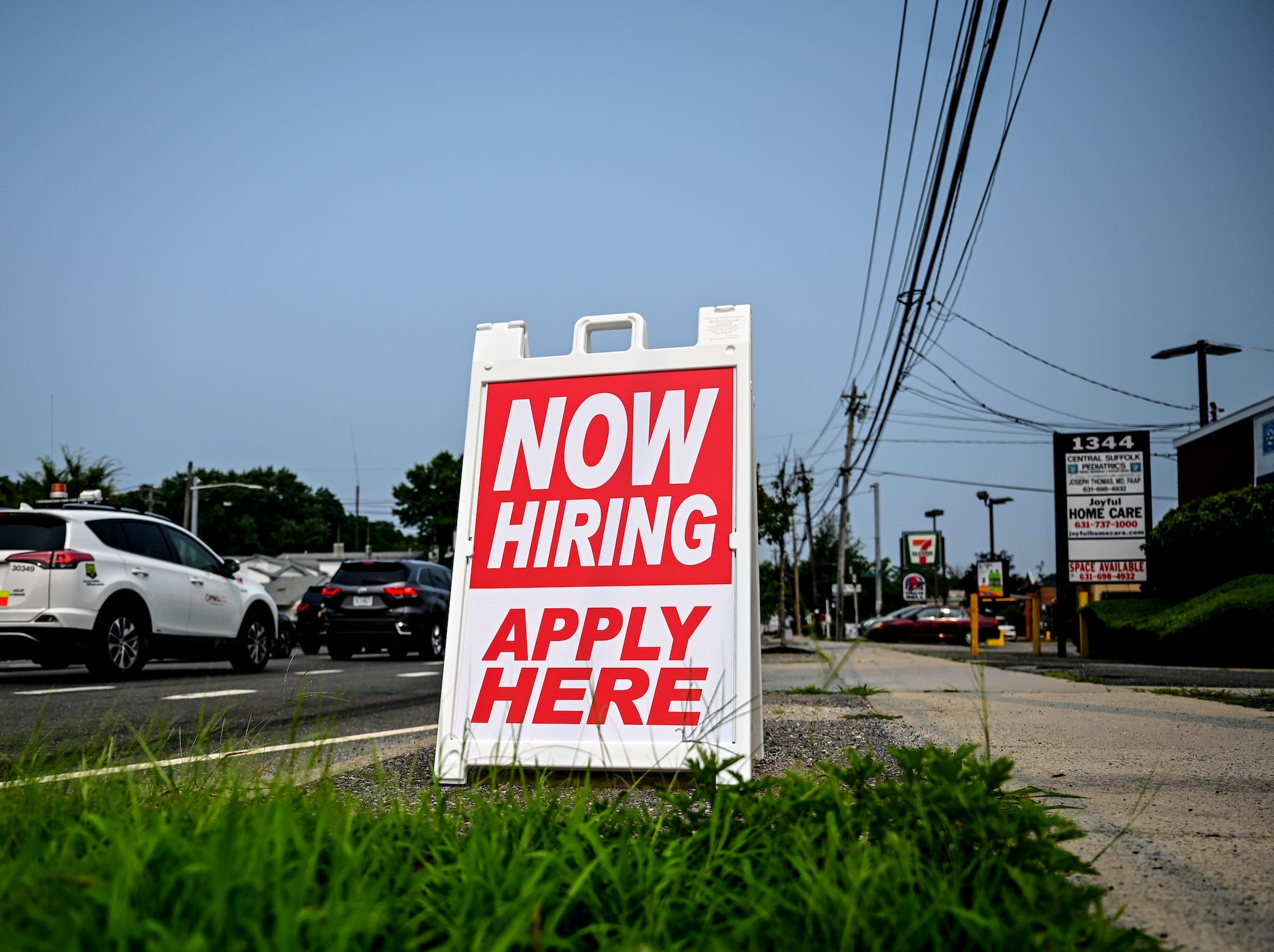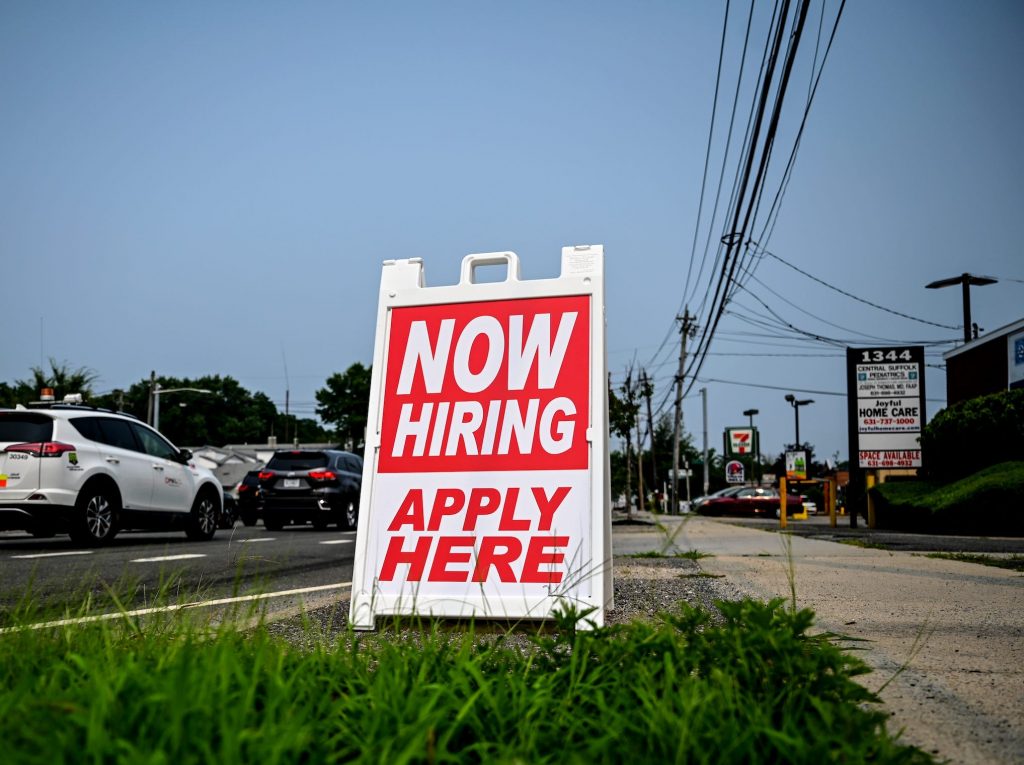
Thomas A. Ferrara/Newsday RM/Getty Images
- Nebraska and New Hampshire have the most job openings per unemployed person, per CareerCloud research.
- The data suggests businesses there are competing hardest for potential workers in the labor shortage.
- Workers have been quitting their jobs in search of better pay, benefits, and working conditions.
- See more stories on Insider's business page.
Nebraska, New Hampshire, and Vermont are among the US states hit hardest by the labor shortage, a report by careers site CareerCloud has suggested.
Nebraska had the most job openings per unemployed person at 1.8, per the research, which analyzed data from the Bureau of Labor Statistics (BLS) and the job boards Indeed, ZipRecruiter, and CareerBuilder. This suggests that businesses there are competing hardest for a potential pool of applicants.
CareerCloud's report ranked New Hampshire second on the measure, with 1.6 job listings per unemployed person, and Vermont third, with 1.59.
Hawaii, on the other hand, had just 0.41 job listings per unemployed person, the lowest number in CareerCloud's ranking. This suggests businesses there have more potential applicants per job than anywhere else in the US.
Some businesses have said that people don't want to work anymore, in some cases blaming it on unemployment benefits. But workers say they're quitting their jobs in search of better pay, benefits, and working conditions.
As a result, businesses have been forced to assess the way they treat their staff to both recruit new workers and stop current ones from quitting. Some have been raising salaries and improving their education and healthcare provisions. Others are hoping that one-off perks, such as sign-on and retention bonuses and free iPhones, will be enough to lure in workers.
The District of Columbia (DC) had an even higher ratio of job openings per unemployed person than Nebraska, at 2.37, per the research.
Part of the reason why DC has such a high rate of vacancies could be because jobs are often filled by workers who live outside the area and commute in. The area has a total labor force of 408,800 people, of which 382,100 are employed - but 749,700 people are on payroll there, per BLS data.
DC has an unemployment rate of 6.5%, preliminary August data from the BLS showed. Its unemployment rate soared from 5.2% in March 2020 to 11.1% in April 2020, after the pandemic hit, and has been steadily declining since, per BLS data.
Businesses ranging from ride-hailing apps and restaurants to hotels and delivery services are struggling to find workers.
Schools are struggling to find enough teachers and bus drivers, too. Businesses across the US have been cutting their hours, raising prices, and, in some cases, closing for good because they can't get enough workers.
Here's how many job listings there are per unemployed person, according to CareerCloud's report
- District of Columbia 2.37
- Nebraska 1.80
- New Hampshire 1.60
- Vermont 1.59
- Utah 1.45
- South Dakota 1.44
- Idaho 1.29
- Montana 1.21
- North Dakota 1.20
- Georgia 1.12
- Alabama 1.10
- Oklahoma 1.08
- Virginia 1.04
- Wisconsin 1.04
- Kansas 1.03
- Indiana 1.02
- Minnesota 1.01
- Iowa 0.99
- Kentucky 0.99
- Massachusetts 0.98
- North Carolina 0.97
- Missouri 0.96
- South Carolina 0.93
- Maine 0.91
- Tennessee 0.89
- Arkansas 0.86
- West Virginia 0.84
- Michigan 0.81
- Oregon 0.80
- Wyoming 0.78
- Ohio 0.77
- Washington 0.75
- Delaware 0.74
- Maryland 0.73
- Florida 0.70
- Alaska 0.68
- Rhode Island 0.68
- Pennsylvania 0.67
- Colorado 0.64
- Texas 0.61
- Mississippi 0.60
- Illinois 0.59
- New Jersey 0.59
- Arizona 0.56
- New Mexico 0.53
- Louisiana 0.52
- Connecticut 0.51
- Nevada 0.50
- California 0.45
- New York 0.45
- Hawaii 0.41
